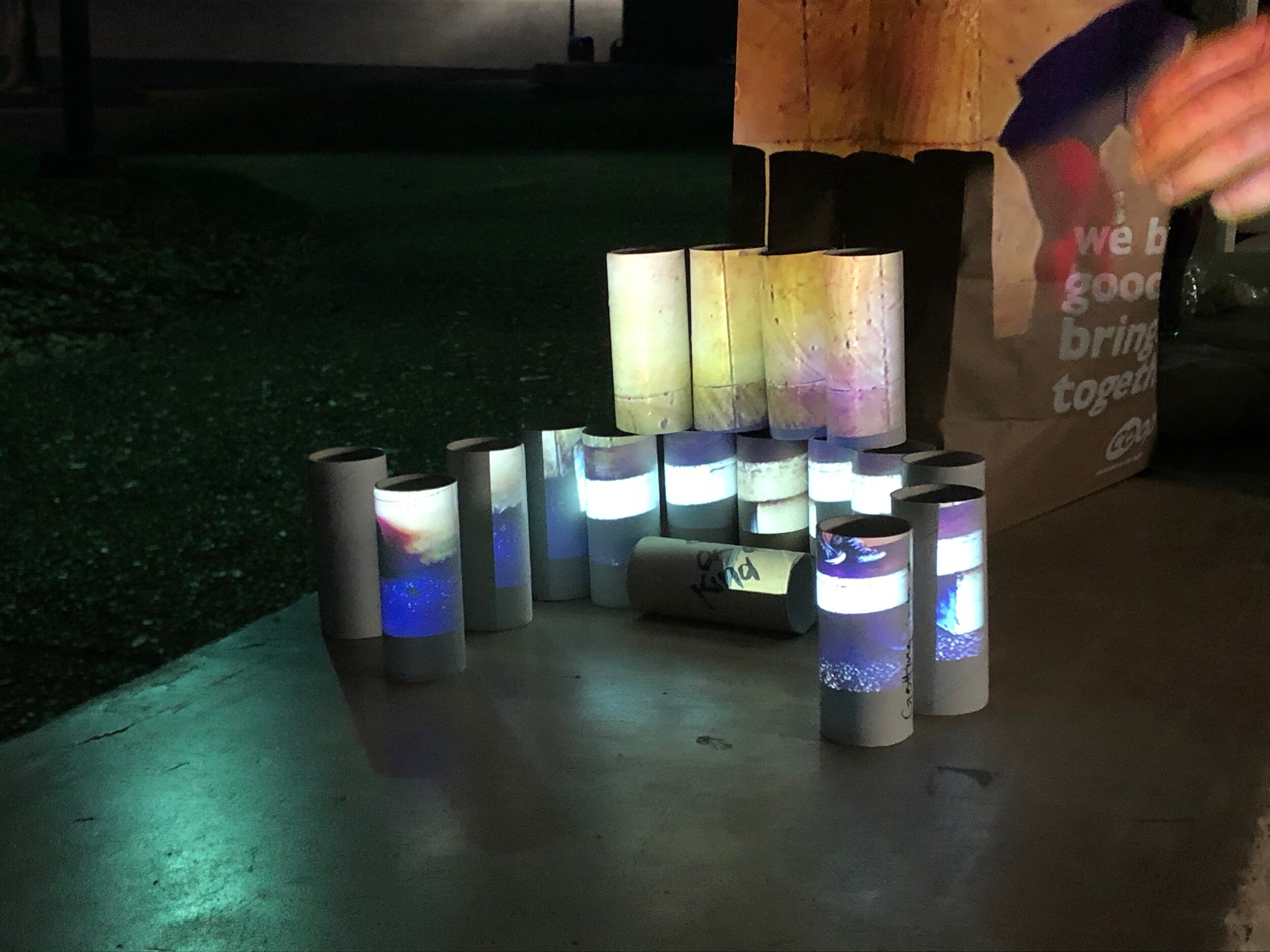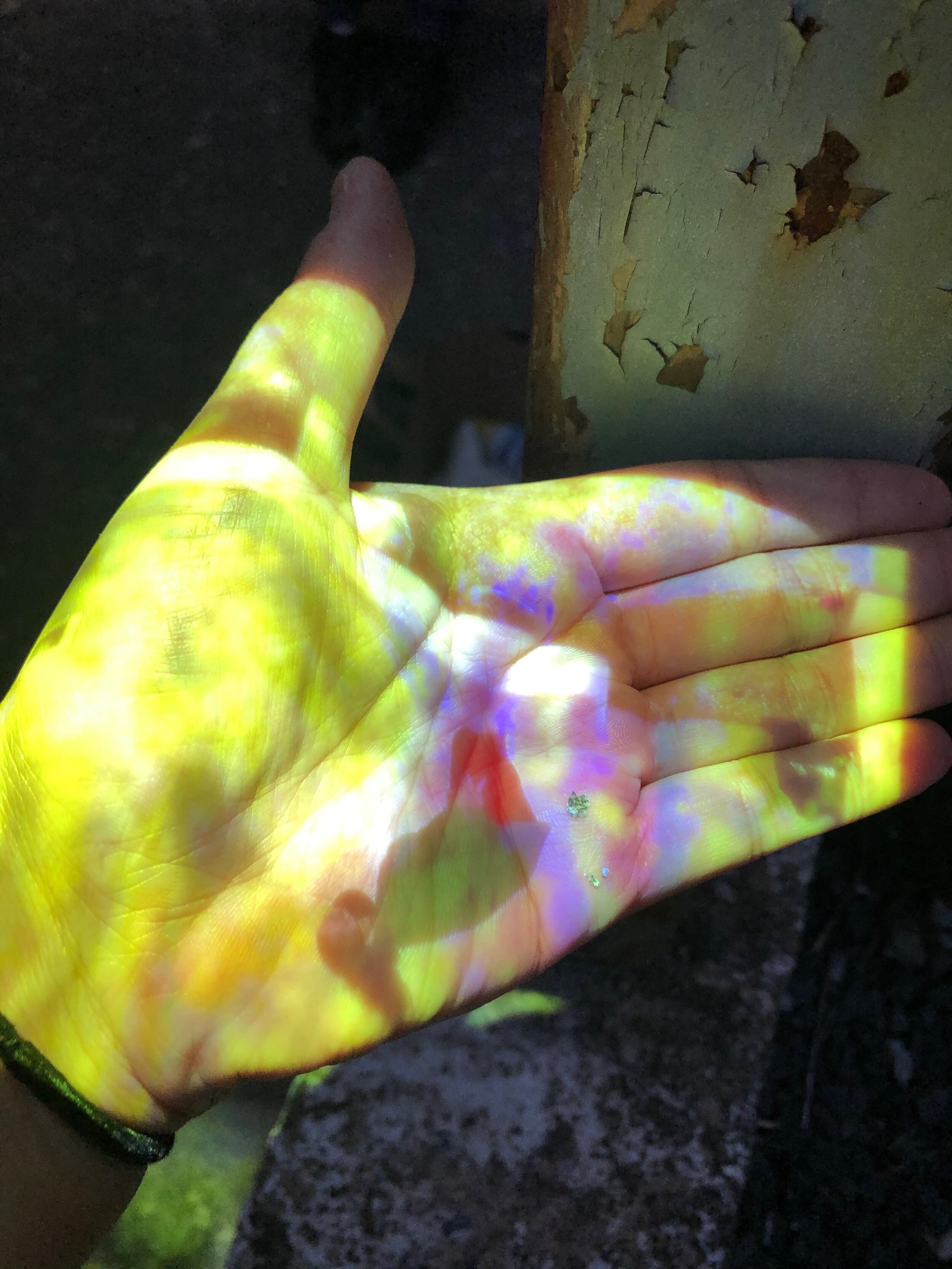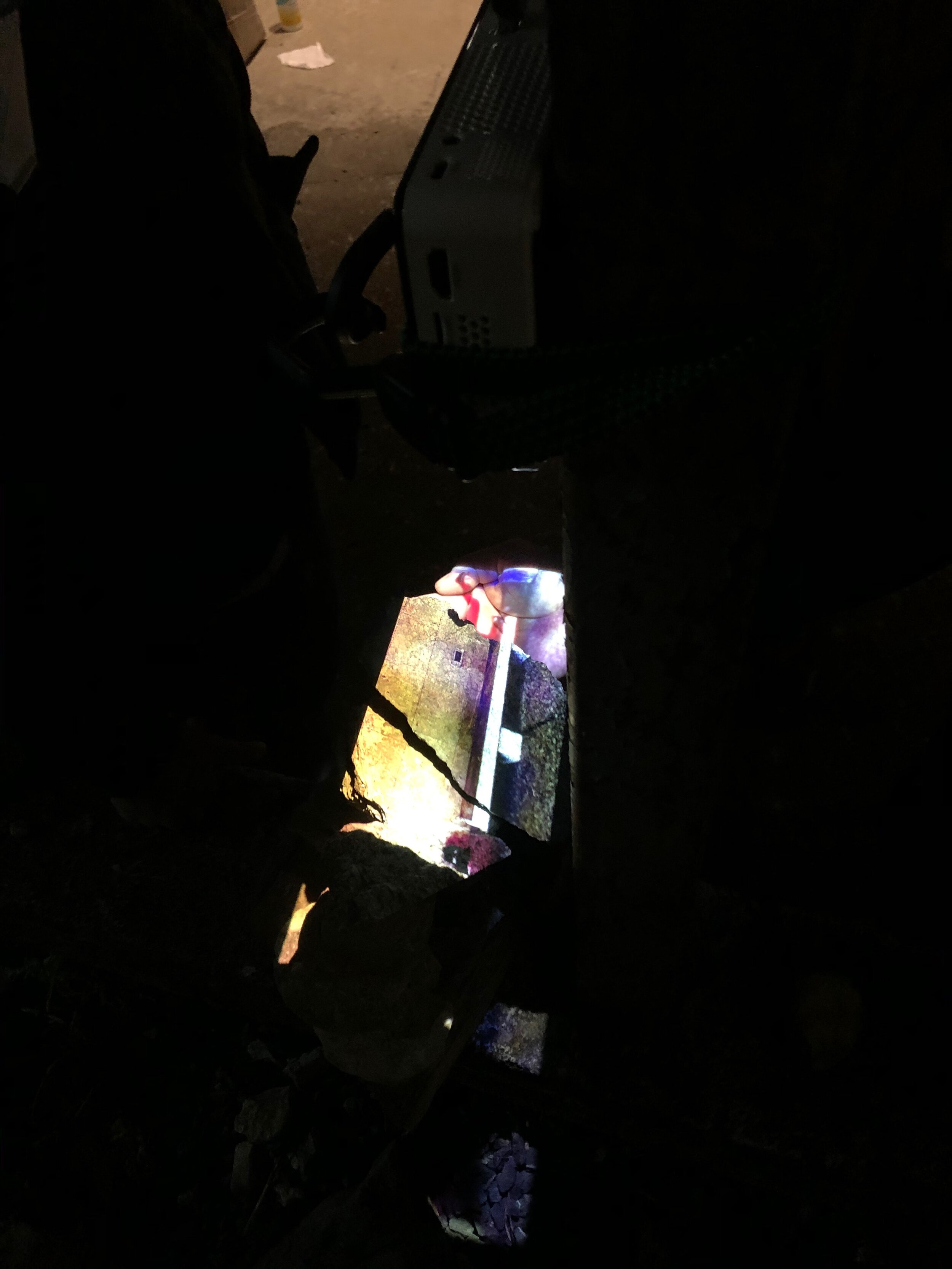Ownerless Beasts
Ownerless Beasts (Spring 2021) is a semester long exploration of a design led devising process in collaboration with MFA director Andrea Hart. The only framing for this piece is the format of an outdoor audio guided radio play tour with stations for an audience to experience. This process was explored through a class called Professional Development Workshop where we had two three hour workshops, with about a month and a half in between, to have our classmates participate and provide feedback during our process. Originally, the piece had themes of loneliness and isolation, but throughout this process has become more focused on cycles, evolution, and what will happen once we finally reemerge from a year indoors.
The process began with an exercise modeled after the game Exquisite Corpse. Our iteration of the game began with me creating imagery, and then, in the same style of the game where each person can only see the work directly before them, a group of classmates/devisors gave each image a title, location, characters, dialogue, actions, a song, and finally another image. This process did not quite yield the results Andrea and I expected, so we decided to use the same imagery but try a different form of content generation.
Below is an excerpt from Andrea’s stream of consciousness writing in response to the imagery, with my responses to her writing italicized.
It makes me think of soil. Or dirt/soil as being both a place of death/decay and also regeneration/growth.
…
What colors will my death create? This last, beautiful artwork you would be known for. But you literally had no say. It just happened…it was just released into the universe upon your death. What would it look like? What would it be? What would you do differently to try to make it what you could be proud of? What you would want to see.
This makes me think about all of the incredibly famous artists who didn't become famous until after their death, like Van Gogh
What if, that’s how art was created: Only once people died. We actually looked forward to others deaths in a way b/c it would release something amazing into the world. So when people died, it became more of a celebration—not a train wreck. We weren't reading those headlines to be like: oooh, was it an overdose? Was is suicide? Instead we were like…oooh….what art did her death unleash? What did her death generate? I can’t wait to see b/c based on what I know of her, it’s got to be something amazing.
And it would be this way that people strove to live better lives. Thinking that each good thing they did added this brilliant new detail to this thing that they would reveal once they died. And it would also be this thing that just kept growing and expanding as the years went on after their death. Every time someone spoke of a memory of them it would breathe new life into the organism and it would expand more. Force new colors into the mix. If you visited their artwork, your physical presence would create a new sheen.
I love this additive nature and how it's a manifestation or visualization of how people's personalities and presence affect others
…
Would people try harder?
Would people worry less?
Would people kill less. Every life you took you had to witness their artwork explode out of them. You’d never be free of it. You’d carry it around with you in some way…hounded by the beauty their life created until you died.
How would that work? Would the artwork just hover where the person died?
Like the twin tower site in NYC would just be a mass, a huge, automatic monument of art. An Instant museum. People would come from all over the world. “Look at that amazing one! That was the custodian on the 24th floor.”
And then the people who did it…theirs would be there too. What would it look like?
We tried the same process of stream of consciousness writing in response to another piece of imagery.
Growth. But like mossy--lichen-like growth. This reminds me of what [one of the current UT MFA playwrights] was saying when she wanted to write about the other parts of this. “What’s there when you keep digging deeper into the soil.” The way moss grows on unmoving things. Same with lichen.
I miss this hiking trail in the Bay Area. Massive redwoods. Moss all year. 2 minutes from home. I went there consistently for 18 years.
Words like fecund.
I felt like I was growing moss by the time I left the Bay Area. That was one of the reasons I wanted to leave. I started feeling like you get so old and then there’s just your life...the one you sort of stopped moving in without realizing it. It had all the pretty things. It was comfortable. Predictable. You always felt antsy but it’s hard to get angry at a place that is allowing you to live such a great life...if only kinda.
And now, I maybe don’t have moss on me or lichen anymore. But I also don’t have those amazing hikes. The things that comforted me. When your routine is so freakin beautiful, it’s hard to remember it’s still just a routine. That is maybe slowly eating you alive.
And now we are all in another kind of routine or stasis. So part of this piece, I think, might be about having gone into the soil...started to grow moss and lichen and then what is that act of surfacing and shaking it off.
I’m thinking of several images: a woman covered in soil then coming to life out of it. Like that would be a cool visual live. Esp. if the audience wasn’t expecting it.
The next step in this process was to experiment with projections on interesting, non traditional surfaces. Andrea and I gathered some projectors, media content, materials, and friends to just play. We spent hours manipulating projectors and surfaces to create interesting looks and textures. Some of the materials we tried were giant masks, balloons, a tower of toilet paper rolls, cloth over a person’s face, and falling flour. We played with projector focus and the process of using materials and bodies to discover the point where the image becomes clear.
The video below is a recap of our discoveries.
After playing and experimenting, we took our discoveries to create an experience for our classmates. We created three stations for everyone to play around and discover the projections. The first station had a blurred projected image and multiple materials, including toilet paper rolls and balloons. We observed as everyone used these materials to reveal the sharp image of a woman dancing on a bench. We discovered a compelling image that appeared of the woman seemingly trapped in the balloon. The second station had a small image where people used their hands and stacked up rocks to reveal the image. At the final station, people used water from a watering can and flour to create the image. We learned that large amounts of water or flour are required to actually reveal any concrete imagery.









After all of this experimentation, Andrea and I decided to bring in two collaborators, an Austin based scenic designer, Lisa Laratta, and an MFA candidate in lighting design, Ari Jamieson, to create a more substantial iteration of the piece to present to audiences.
The final presentation of this iteration of the piece occurred on May 13th, 2021 around Texas Memorial Museum at University of Texas at Austin.


